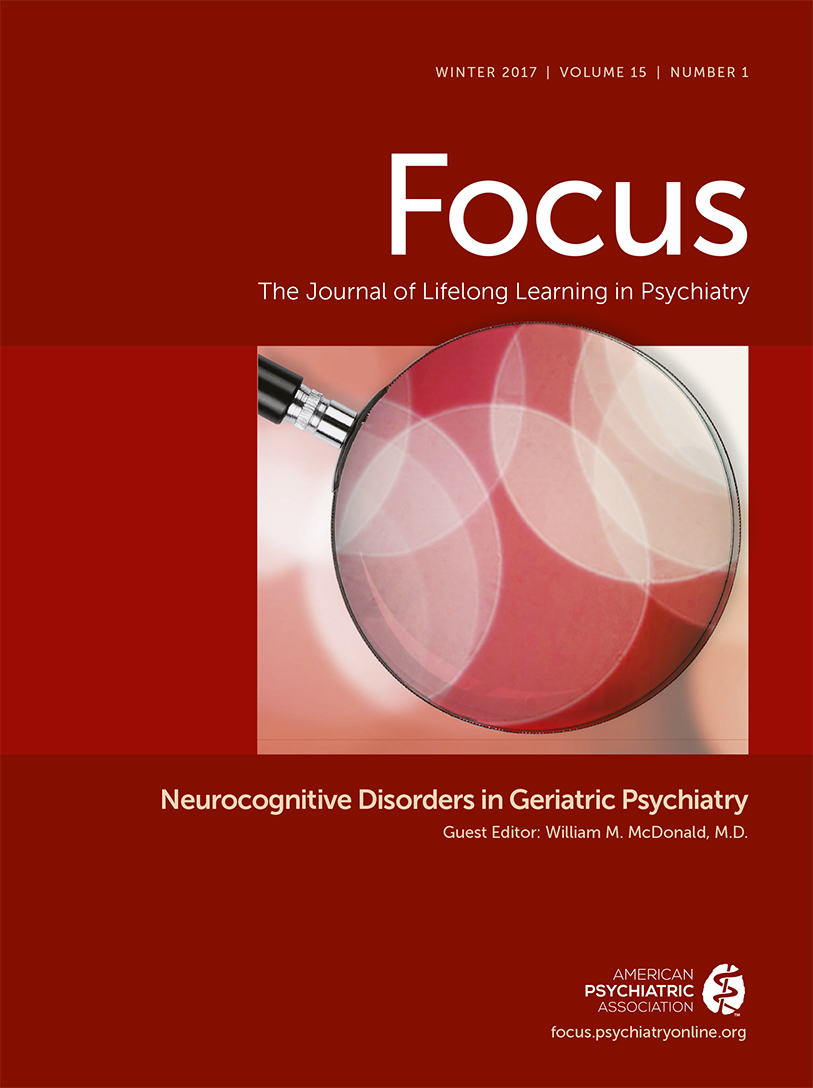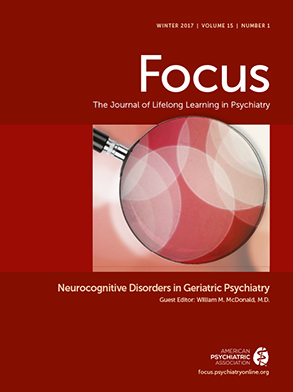Preclinical Alzheimer’s Disease: Definition, Natural History, and Diagnostic Criteria
Dubois B, Hampel H, Feldman HH, et al.
Proceedings of the Meeting of the International Working Group (IWG) and the American Alzheimer's Association on “The Preclinical State of AD,” Washington DC, July 23, 2015. Alzheimers Dement 2016;12:292–323
During the past decade, a conceptual shift occurred in the field of Alzheimer's disease (AD) considering the disease as a continuum. Thanks to evolving biomarker research and substantial discoveries, it is now possible to identify the disease even at the preclinical stage before the occurrence of the first clinical symptoms. This preclinical stage of AD has become a major research focus as the field postulates that early intervention may offer the best chance of therapeutic success. To date, very little evidence is established on this “silent” stage of the disease. A clarification is needed about the definitions and lexicon, the limits, the natural history, the markers of progression, and the ethical consequence of detecting the disease at this asymptomatic stage. This article is aimed at addressing all the different issues by providing for each of them an updated review of the literature and evidence, with practical recommendations.
Copyright © 2016 The Alzheimer's Association. Published by Elsevier Inc. All rights reserved.
Cognitive Reserve and the Prevention of Dementia: The Role of Physical and Cognitive Activities
Cheng S-T
Current Psychiatry Rep. 2016; 18(9):85
Purpose of Review: The article discusses the two most significant modifiable risk factors for dementia, namely, physical inactivity and lack of stimulating cognitive activity, and their effects on developing cognitive reserve. Recent Findings: Both of these leisure-time activities were associated with significant reductions in the risk of dementia in longitudinal studies. In addition, physical activity, particularly aerobic exercise, is associated with less age-related gray and white matter loss and with less neurotoxic factors. On the other hand, cognitive training studies suggest that training for executive functions (e.g. working memory) improves prefrontal network efficiency, which provides support to brain functioning in the face of cognitive decline. Summary: While physical activity preserves neuronal structural integrity and brain volume (hardware), cognitive activity strengthens the functioning and plasticity of neural circuits (software), thus supporting cognitive reserve in different ways. Future research should examine whether lifestyle interventions incorporating these two domains can reduce incident dementia.
Effects of Citalopram on Neuropsychiatric Symptoms in Alzheimer's Dementia: Evidence From the CitAD Study
Leonpacher AK, Peters ME, Drye LT, et al.
American Journal of Psychiatry 2016; 173:473–480
Objective: Citalopram has been shown to improve agitation in patients with Alzheimer’s disease. The authors evaluated whether other neuropsychiatric symptoms improve with citalopram treatment compared with placebo. Method: In this planned secondary analysis of the Citalopram for Agitation in Alzheimer’s Disease study, the authors evaluated the effect of citalopram on the 12 neuropsychiatric symptom domains assessed by the Neuropsychiatric Inventory (NPI). They compared caregiver-reported NPI scores at week 9 in patients receiving citalopram (30 mg/day) or placebo with regard to both the presence or absence of individual neuropsychiatric symptoms and individual domain scores (reflecting severity) in participants who had symptoms at week 9. Results: At week 9, participants treated with citalopram were significantly less likely to be reported as showing delusions (odds ratio=0.40), anxiety (odds ratio=0.43), and irritability/lability (odds ratio=0.38). A comparison of median scores of participants with symptoms present at week 9 showed significant differences favoring citalopram for hallucinations and favoring placebo for sleep/nighttime behavior disorders. Conclusions: While dosage constraints must be considered because of citalopram’s adverse effect profile, this agent’s overall therapeutic effects in patients with Alzheimer’s disease and agitation, in addition to efficacy for agitation/aggression, included reductions in the frequency of irritability, anxiety, and delusions; among patients who had these symptoms at week 9, they included a reduction in the severity of hallucinations but an increase in the severity of sleep/nighttime behavior disorders.
Reprinted with permission from American Psyciatric Association Publishing.
Long-Term Outcomes of Randomized Trial of Integrated Skills Training and Preventive Healthcare for Older Adults With Serious Mental Illness
Bartels SJ, Pratt SI, Mueser KT, et al.
Am J Geriatr Psychiatry 2014; 22:1251–1261
This report describes 1-, 2-, and 3-year outcomes of a combined psychosocial skills training and preventive healthcare intervention (Helping Older People Experience Success [HOPES]) for older persons with serious mental illness. METHODS: A randomized controlled trial compared HOPES with treatment as usual (TAU) for 183 older adults (age≥50 years [mean age: 60.2]) with serious mental illness (28% schizophrenia, 28% schizoaffective disorder, 20% bipolar disorder, 24% major depression) from two community mental health centers in Boston, Massachusetts, and one in Nashua, New Hampshire. HOPES comprised 12 months of weekly skills training classes, twice-monthly community practice trips, and monthly nurse preventive healthcare visits, followed by a 1-year maintenance phase of monthly sessions. Blinded evaluations of functioning, symptoms, and service use were conducted at baseline and at a 1-year (end of the intensive phase), 2-year (end of the maintenance phase), and 3-year (12 months after the intervention) follow-up. RESULTS: HOPES compared with TAU was associated with improved community living skills and functioning, greater self-efficacy, lower overall psychiatric and negative symptoms, greater acquisition of preventive healthcare (more frequent eye exams, visual acuity, hearing tests, mammograms, and Pap smears), and nearly twice the rate of completed advance directives. No differences were found for medical severity, number of medical conditions, subjective health status, or acute service use at the 3-year follow-up. CONCLUSION: Skills training and nurse facilitated preventive healthcare for older adults with serious mental illness was associated with sustained long-term improvement in functioning, symptoms, self-efficacy, preventive healthcare screening, and advance care planning.
Copyright © 2014 American Association for Geriatric Psychiatry. Published by Elsevier Inc. All rights reserved.
Prevalence of Mixed Pathologies in the Aging Brain
Rahimi J, Kovacs GG
Alzheimers Res Ther 2014;6(9):82
The spectrum of mixed brain pathologies expands beyond accompanying vascular pathology in brains with Alzheimer's disease-related pathology. Co-occurrence of neurodegenerative non-Alzheimer's disease-type proteinopathies is increasingly recognized to be a frequent event in the brains of symptomatic and asymptomatic patients, particularly in older people. Owing to the evolving concept of neurodegenerative diseases, clinical and neuropathological diagnostic criteria have changed during the last decades. Autopsy-based studies differ in the selection criteria and also in the applied staining methods used. The present review summarizes the prevalence of mixed brain pathologies reported in recent community-based studies. In these cohorts, irrespective of the clinical symptoms, the frequency of Alzheimer's disease-related pathology is between 19% and 67%, of Lewy body pathology is between 6% and 39%, of vascular pathologies is between 28% and 70%, of TDP-43 proteinopathy is between 13% and 46%, of hippocampal sclerosis is between 3% and 13% and, finally, of mixed pathologies is between 10% and 74%. Some studies also mention tauopathies. White-matter pathologies are not discussed specifically in all studies, although these lesions may be present in more than 80% of the aging brains. In summary, community-based neuropathology studies have shown that complex constellations of underlying pathologies may lead to cognitive decline, and that the number of possible combinations increases in the aging brain. These observations have implications for the prediction of the prognosis, for the development of biomarkers or therapy targets, or for the stratification of patient cohorts for genome-wide studies or, eventually, for therapy trials.

